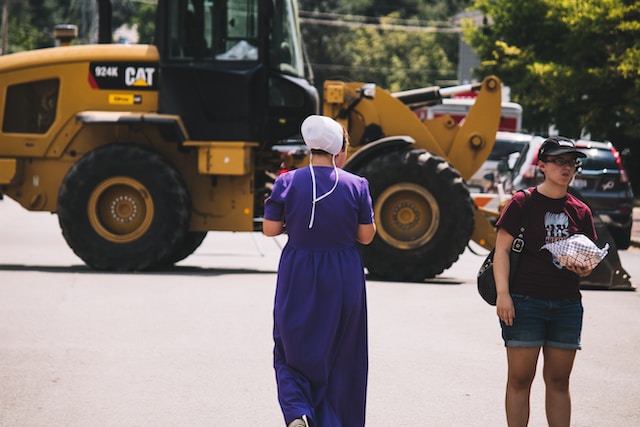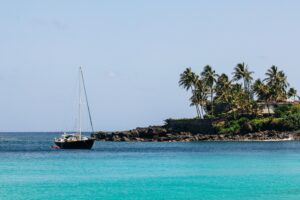Mennonites are an evangelical Christian sect known for their commitment to pacifism, with economic success coming as a result of this working ethos inspired by Christian beliefs.
Communities living off-grid in Belize often eschew modern technologies, including electricity. They are known for producing quality handmade furniture and cattle. You’ll find them scattered throughout Belize in places such as Spanish Lookout, Lower and Upper Barton Creeks, Blue Creek and Shipyard.
The First Wave of Migration
Mennonites are an adherent Christian religious sect with strong, unyielding convictions. Due to this dedication to peace, they have had to move to preserve their way of life and preserve it through relocation.
Mennonites living in Belize come from various backgrounds, but share a unifying past. Most originated in West Prussia in the 18th and early 19th centuries before moving on to Canada and Mexico where their strict principles could no longer survive the harsh climates; eventually settling in Belize in 1958 as their final stop.
Mennonites reside today in small, isolated communities. As farmers, their primary occupation is producing corn, beans, sugar cane and peppers – also raising livestock and boasting an active egg hatchery that supplies fresh eggs to the nation regularly.
Mennonites in Belize have managed to sustain themselves economically despite their relative isolation, thanks to an effective working ethic inspired by religion. Furthermore, they make efforts to remain connected with the outside world through town fairs and local markets that offer them regular exposure.
Mennonites in Belize are well known as successful farmers as well as skilled carpenters, selling furniture throughout Belize City and throughout their community of Spanish Lookout. Additionally, they own and run an expansive general store which can be found here.
Mennonites also enjoy close ties to their local churches and participate in numerous outreach projects; placing a special focus on giving to those less fortunate than themselves. Therefore, they have become a significant component of Belizean society and an invaluable part of life here.
While Mennonites of Belize share many similarities with other immigrant groups, they stand out by adhering to strict religious-based principles and this makes them an intriguing group to study – it will be intriguing to witness their adaptation to an ever-evolving world!
The Second Wave of Migration
Mennonites who migrated around the globe sought a home where they could uphold strict rules and values that defined their way of life and ensured they could maintain their religious beliefs without outside influence, leading them to settle on farms outside of society, often on land they owned independently and farmed themselves.
Mennonites began migrating from Mexico and Canada to Belize in large groups in the late 1950s. An agreement with the government allowed them to settle on large tracts of land while giving them complete freedom to practice their religion within their communities without incurring military service obligations, yet paying all taxes other than property tax.
This partnership worked out very well for both Mennonites and Belize’s government. Mennonites successfully farmed crops while providing essential products like poultry, dairy and furniture – developing strong identities within both groups that allowed them to flourish over time.
But this arrangement had its downside. Over time, younger Mennonites started becoming discontent with their strict culture and pacifist beliefs; some argued that strict interpretations of scripture were obsolete or no longer relevant in today’s society; additionally they were growing tired of maintaining rural lifestyles with such hard labor-intensive requirements.
As a result, in the early 2000s a group known as Altkoloniers separated themselves from the community and were excommunicated from church. These members believed that Scripture stressed rules over doing things “the way your parents taught you”. Additionally, these traditions represented superficial behavior rather than true faith.
Contrasting with the strict rules of Altkoloniers, Mennonites who settled in Blue Creek and Shipyard did not conform to such strictures. Instead they owned vehicles, used telephones, listened to radio and often spoke English alongside Plautdietsch – as well as dressing in clothing that reflected earlier times.
The Third Wave of Migration
Mennonites in Belize are widely recognized for producing top-quality beef, dairy products, produce and honey. They also craft quality furniture which is sold at local markets throughout Belize. Most Mennonite communities can be found in Cayo and Orange Walk districts; Spanish Lookout, Upper/Lower Barton Creek Springfield Pine Hill Shipyard Little Belize all host these communities where many live off grid – without electricity or gas powered vehicles! In addition to these goods Mennonites are well known for their agricultural expertise as well as their commitment towards leading simpler lifestyles.
Mennonites came to Belize through an unusual and fascinating path. Starting in the Netherlands during the XVI century, they left persecution due to their refusal to pay taxes or support military or school systems, moving on through Germany, Prussia, Mexico and then British Honduras (now Belize).
In the 1950s, British Honduras reached out to Mennonites in Chihuahua, Mexico and offered them land and religious freedom in exchange for helping boost its agriculture industry. Today, these colonies remain major economic players within Honduras; some even producing poultry, hardware and building supplies, dairy products and vegetables for domestic consumption.
Mennonites in Belize remain relatively sheltered communities despite their success, remaining separate from more densely-populated cities and not interacting with anyone outside their communities. This seclusion was initially necessary due to practical considerations; producing and selling goods in remote parts of Belize required transportation.
Today, most Mennonites living in remote communities in Belize have adjusted to their new lives without feeling the need to leave them. They find a fulfilling existence amongst Belize’s rural and agriculturally rich lands and don’t wish to risk that.
Mennonites in Belize tend to belong to the Kleine Gemeinde church, which upholds Anabaptist beliefs and pacifism even while working in business environments. Furthermore, this denomination insists upon the separation between church and state and maintains Mennonite religious identities through special care in maintaining these identifiers.
The Fourth Wave of Migration
Mennonites, an Anabaptist Protestant sect of Christianity, have an impressive migration history. From Canada and Mexico during the 18th century through to Belize in the 1950s and more recently. Mennonites sought places that would allow them to practice their beliefs freely without interference from government or religious bodies.
Due to this fact, these communities remain distinct societies with diverse cultures and traditions. Today, Belize’s Mennonite population can be found throughout Cayo, Corozal, Orange Walk Districts. Each community has developed its own distinct character; while some Mennonites prefer living without electricity and modern technology such as rubber-wheel tractors, cars or computers.
Mennonites pride themselves on self-sufficiency and communal support as a cornerstone of life, including farming. Older children take care of younger ones while neighbors help each other with agricultural tasks or repair equipment repairs. Their culture emphasizes being in the world but not of it and striving to be good neighbors.
Their religious practices have helped Mennonites overcome difficult circumstances, yet have also caused division within their communities. More traditional Mennonites tend to avoid having any relationships with non-Mennonites while those from Kleine Gemeinde, or middle ground grouping, have made a more sophisticated adaptation and now engage in social interactions and even smoke cigarettes.
Although diverse in their beliefs and practices, these communities have come together as integral pieces of Belizean economy. They provide goods including poultry, hardware and building supplies, vegetables, milk and dairy products and meat to the rest of Belizean. Furthermore, many are known for crafting quality furniture as skilled carpenters.
Mennonites in Belize have thrived thanks to a deep-seated sense of communal responsibility and desire to maintain rural lifestyles, which has allowed them to exceed all expectations of success and impact on local economies. Their faith, hard work, and persistence serve as an example for visitors coming to Belize.




